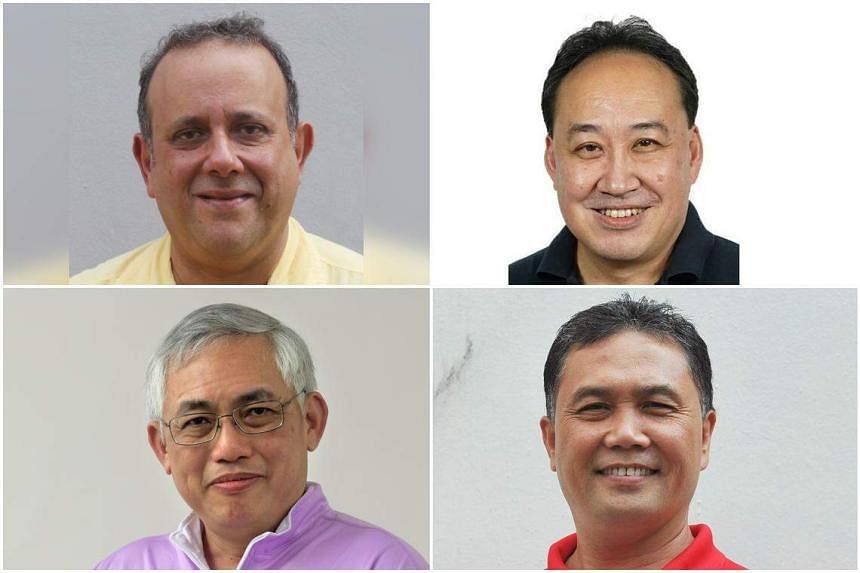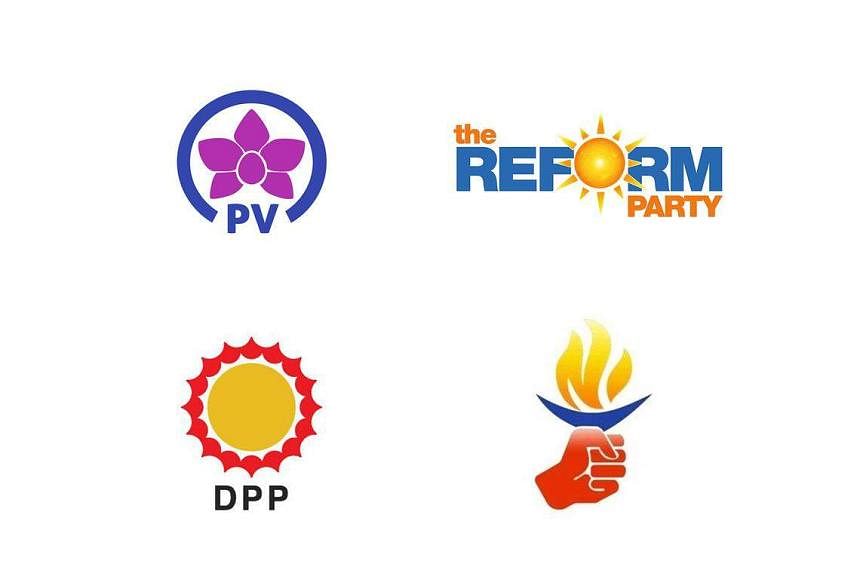SINGAPORE - On June 1, four opposition parties here – Peoples Voice (PV), Reform Party, People’s Power Party and Democratic Progressive Party – announced they were forming a new People’s Alliance ahead of the next general election, which must be called by November 2025.
This came just days after the Progress Singapore Party (PSP) said at a press conference that it will “proactively facilitate” the forming of an opposition alliance.
But why now, and why the closely timed announcements? Can the parties leverage the new grouping to make electoral inroads?
History of opposition coordination
Today, opposition parties here largely avoid competing against one another in the same districts. But it wasn’t always like this.
The 1972 General Election was contested by five opposition parties – Barisan Sosialis, Workers’ Party (WP), People’s Front, United National Front and Singapore Malay National Organisation (PKMS). A total of 57 constituencies were up for grabs, with PAP candidates elected unopposed in the other eight.
Intense opposition infighting rattled the public, who voted in favour of the People’s Action Party (PAP). For the second time since independence, PAP made a clean sweep of parliamentary seats.
Since then, to avoid three-cornered fights, opposition parties here have observed an informal rule: If Party A contested in a district against PAP in the previous election, it has first dibs on contesting there in the next election. This is unless Party B can cite strong reasons why it should go first.
The result has been that, leaving aside independent candidates, only an average of 7.2 per cent of contested districts between 1976 and 2020 had more than one opposition candidate in an electoral cycle.
Currently, there are nine WP MPs out of 92 elected MPs, and two PSP Non-Constituency MPs.
In his book Opposing Power: Building Opposition Alliances In Electoral Autocracies, National University of Singapore Assistant Professor Elvin Ong cited an opposition leader as saying: “You start off first with... everybody huffing and puffing themselves up to look bigger than they actually are.
“Then in the end, if we can agree, we agree. If not, three-cornered fight. More often than not, you know someone will blink and then the game of chicken will come to an end.”
Sometimes, though, the game of chicken doesn’t end there.
In the 2015 General Election, the National Solidarity Party (NSP) staked its claim on MacPherson SMC when the ward was split from Marine Parade GRC.
After initially agreeing to cede the ground to WP, NSP later reversed its decision, calling WP “arrogant” and declaring that it would contest there after all.
In the end, the results in MacPherson confirmed the relative strengths of the two opposition parties. WP candidate Bernard Chen earned 33.6 per cent of the vote share there, while NSP candidate Cheo Chai Chen polled less than 1 per cent.
“The NSP wasted precious time and resources contesting in MacPherson SMC, including the candidate’s ($14,500) election deposit,” wrote Prof Ong.
The last opposition alliance – the Singapore Democratic Alliance (SDA) led by veteran opposition MP Chiam See Tong – was formed in 2001, and contested in the 2001 and 2006 elections.
NSP and the Singapore People’s Party left SDA in 2007 and 2011, respectively. While the alliance continued to contest in elections from 2011 to 2020, it did not win any seats and eventually unravelled.
More recently, in 2018, seven opposition parties met to discuss joining forces, prompted by the Singapore Democratic Party (SDP).
There was talk of former PAP MP and presidential candidate Tan Cheng Bock, now PSP chairman, becoming their leader. But nothing came of it.
After PSP was set up in 2019, it did not even go into a limited coalition with, say, the SDP and PV to fight GE2020, despite the swirl of online rumours suggesting that such a coalition would emerge.
“One can only infer that, as Tan Cheng Bock failed to get a pact with the WP – the only first-rank alternative party – he was not keen on any pact with lesser parties,” wrote political observer Derek da Cunha in his book Breakthrough 2.0: Singaporeans Push For Parliamentary Democracy.
Reasons for an alliance
The new alliance comes with several advantages: less fragmentation, pooling of resources, greater public visibility, and unity in messaging.
Put bluntly, the coming together of the four parties is about political survival, said Singapore Management University (SMU) Associate Professor of Law Eugene Tan: “Ensuring no three-way fights is integral to survival, as the likes of WP and PSP seek to contest in more seats.”
Prof Ong sounded a similar note, saying that it allows them to stake an early claim to electoral districts where they have contested before.
Dr Felix Tan, a political analyst at Nanyang Technological University (NTU), said the four parties may have been worried that PSP candidates in the upcoming election would draw away support from among their own members and supporters.
This might have led to them announcing an alliance to prevent the shifting of allegiance, he said.
But, as seen from SDA’s example, coming together may be the least challenging part of the new alliance’s political journey.
SMU’s Prof Tan said working together and putting aside each party’s interests, and managing the various political personalities’ ambitions and egos, will be critical if the alliance is going to be greater than the sum of its parts.
“The litmus test for now is whether the alliance is of convenience and expediency, or of substance. I don’t see the mere forming of an alliance as moving the needle on their electability,” he said.
The challenges
In Singapore’s context, there are three specific hurdles to forming a successful alliance.
First, opposition parties cannot confirm their district allocation until the exact boundaries of constituencies are released in the report by the Electoral Boundaries Review Committee.
If the electoral boundaries of districts they previously contested are changed, the informal “first dibs” rule may be upended.
Newly formed electoral districts also create uncertainty over each party’s relative popularity and chances of success in those districts, making consensus difficult.
Second, Section 27A 3(a) of the Parliamentary Elections Act states that candidates contesting in a group representation constituency (GRC) must be members from the same political party.
In other words, going by Singapore’s electoral rules, a “true” alliance is not possible unless one is talking about forming a brand-new opposition party.
Third, forming an alliance substantively means giving up one’s existing party vehicles or labels.
This is of little cost to small parties with less brand recognition – the four parties in question – but of great cost to the larger opposition parties with established brands.
“For the PSP to actually implement joining such an alliance, (PSP secretary-general) Leong Mun Wai must quit the PSP and join the People’s Alliance. (WP chief and Leader of the Opposition) Pritam Singh must also quit the WP and join the alliance. Will they do that? Of course not,” said Prof Ong.
“In fact, any talk by Mr Leong about an opposition alliance should be better interpreted as asking... leaders from smaller parties to quit their respective parties, and join the PSP instead.”
Can the alliance succeed?

Whether the new alliance will succeed depends on many factors, including how and where it places its candidates, its policy proposals, and how cohesively it campaigns.
One option is to place each of the four parties’ most prominent leaders – Mr Kenneth Jeyaretnam, Mr Lim Tean, Mr Goh Meng Seng and Mr Mohamad Hamim Aliyas – in the same team to contest a GRC under the People’s Alliance banner.
“Theoretically, voters in a GRC might perceive this group of prominent leaders to be more credible than a group of relatively less well-known candidates,” said Prof Ong. He stressed that whether this will pan out in reality is anyone’s guess.
In terms of policy proposals, the new alliance has hinted that it will campaign on housing affordability, immigration, job security, and the cost of living.
These are perennial issues in electoral politics here. But whether the alliance can convince voters depends on the details of its proposals, and Singaporeans’ confidence in its ability to carry them out.
More fundamentally, the new entity has to be clear on its objectives.
If it merely came into being for tactical reasons so that it might have some clout with other parties, then it might not work out, said political observer Derek da Cunha.
To stand a chance of winning, he said any challenger to PAP has to check all these boxes:
- Party branding that can easily be identified in a positive way by voters
- Having plenty of materiel and manpower resources, including funds to run a viable election campaign, and hundreds of volunteers
- Candidates with above-average credentials
- Careful positioning, so that voters do not perceive an entity that is too far off the political centre
NTU’s Dr Tan has two additional pieces of advice for the new alliance: Avoid pandering to populist demands, and “be present”.
“We have seen how some of the opposition candidates in the last GE were rather lacklustre, or simply did not make any attempt whatsoever to present themselves to the public on other platforms and means – despite the fact that it was conducted during a pandemic, and there were restrictions to physical appearances,” he said.
Long road ahead
Without WP or PSP joining it, SMU’s Prof Tan thinks the electoral impact of this new alliance is likely to be negligible.
But what happens next matters, too.
Will the fact that there is now an alliance boost its attractiveness to larger parties like PSP? Will it eventually become part of a PSP-led alliance?
What is clear is that today, this fledgling political union is nowhere near what is commonly understood as a coalition – where parties negotiate an agreement among themselves to form a government, and codify their shared goals and political philosophies.
“In Singapore, without the WP and PSP, it is obvious that we are nowhere near a pre-election coalition,” said Prof Ong, who made a distinction between pre- and post-election coalitions.
He cited Malaysia as an example of a country which has had both, the latest being its post-election coalition government formed in December 2022.
But hypothetically, there could be a scenario where opposition parties deny PAP an outright majority, he said.
“We might see a hung Parliament (like in Malaysia and Thailand), which then leads to post-electoral coalition government negotiations. Such a scenario is not unimaginable.”
There is also the question of policy and political positioning.
These small parties will need to be a lot more active in between elections, as no one knows their positions on key issues of the day, said SMU’s Prof Tan.
“It’s too easy to critique government policies, but winning people over with their policy proposals requires a lot of hard work, nuanced understanding of issues, and expertise.”
NTU’s Dr Tan said more opposition does not mean more choices. Rather, Singaporeans may simply vote for those whom they are familiar with, and who have shown what they are capable of.
For now, WP does not seem to be keen on leading or joining any alliance, as it is unlikely any opposition party will add to WP’s heft.
There are few incentives for WP, or even PSP and SDP, to sacrifice what they have achieved to join any alliance, which may diminish their ability to get across their own message and campaign promises, said Dr Tan.
In the end, history has shown that groups which come together quickly can also fall apart quickly, due to differences over political vision and individual ambitions.
So, even as the opposition here makes its stand against the government of the day, it cannot afford to ignore what may well be its biggest challenge of all – the one that comes from within.


